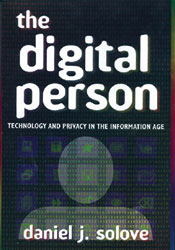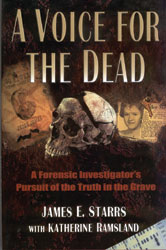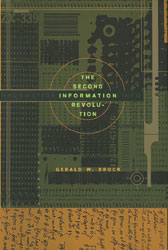|

Digital Dossiers
 Sharing
information, conducting business, and communicating via the
Internet have made many aspects of life increasingly convenient.
Daniel J. Solove, associate professor of law and author of
The Digital Person: Technology and Privacy in the Information
Age (New York University Press, 2004), says that convenience
comes at a price. Sharing
information, conducting business, and communicating via the
Internet have made many aspects of life increasingly convenient.
Daniel J. Solove, associate professor of law and author of
The Digital Person: Technology and Privacy in the Information
Age (New York University Press, 2004), says that convenience
comes at a price.
Every time an individual surfs the Internet,
databases create profiles of purchases, activities, interests,
and preferences—“digital dossiers” as Solove
calls them—that are used for credit checks, marketing
strategies, and personal investigations. While information
gathering does have its purposes, Solove explains why these
profiles pose a threat to personal privacy and security and
says they open the door to identity theft. Since Sept. 11,
2001, Solove says the government has tapped into stores of
information collected by businesses and used it to profile
individuals for criminal or terrorist activity—practices
he says have “Orwellian and Kafkaesque dangers.”
“The Digital Person is a far-reaching
examination of how digital dossiers are shaping our lives.
Solove has persuasively reconceptualized privacy for the digital
age,” says Brooklyn Law School professor Paul Schwartz.
From a legal perspective, Solove explores
how current practices match up with the Fourth Amendment and
outlines how current laws fail to keep up with the technological
pace. Solove says increased public awareness and involvement
could curtail the problems involved with information gathering
and could help bring about change—change that cannot
be achieved through individual lawsuits, he says, but rather
through implementing a regulatory system such as the FDA or
the EPA. Harmony between the conveniences and concerns brought
about by Internet communications can be achieved with reform,
Solove says. It’s a matter of “restructuring the
architecture.”
Uncovering the Buried Truth
 “The
evil that men do lives after them, The good is oft interred
in their bones.” Professor
James E. Starrs borrows Shakespeare’s lines from Julius
Caesar to illustrate his interest in solving cold cases—some
of them hundreds of years old—in A Voice for the Dead:
A Forensic Investigator’s Pursuit of the Truth in the
Grave (Putnam, 2005). Written with Katherine Ramsland,
the book explores several cases that Starrs helped to solve
by examining bodies long in the grave using technology and
forensic science practices. “The
evil that men do lives after them, The good is oft interred
in their bones.” Professor
James E. Starrs borrows Shakespeare’s lines from Julius
Caesar to illustrate his interest in solving cold cases—some
of them hundreds of years old—in A Voice for the Dead:
A Forensic Investigator’s Pursuit of the Truth in the
Grave (Putnam, 2005). Written with Katherine Ramsland,
the book explores several cases that Starrs helped to solve
by examining bodies long in the grave using technology and
forensic science practices.
A professor of forensic sciences and a research
professor of law, Starrs describes the cases from historical,
field, and legal perspectives. “Utilizing modern-day
forensic scientific techniques and top-flight experts, and
applying his vast legal experiences and intellectual brilliance,
Starrs has made significant and unique contributions to our
criminal justice system,” says Cyril H. Wecht, a professor
at the University of Pittsburgh and coroner of Alleghany County
in Pennsylvania. “A Voice for the Dead is a fascinating
real-life discussion of exhumation autopsies that makes fictional
television programs seem like fairy tales for children.”
The exhumations he recounts include the
case of Alfred Packer, a Colorado prospector accused of cannibalism
in the 1870s; the body believed to be that of Jesse James;
and Mary Sullivan, an alleged victim of Albert DeSalvo, a
suspect in the Boston Strangler cases of the 1960s.
While the scandalous nature of the lives
and deaths of these and other individuals lend drama to the
book, the exhumations themselves spark legal and moral debate.
Starrs chronicles the issues raised by the government and
the descendants of the deceased and how he justifies disturbing
their final rest. Starrs seeks to balance respect for the
dead with the truth for the living—as he writes, “the
lawyer in me says they deserve their day in court.”
Information Redux
 Due
to technological advancements such as the Internet and cell
phones, the speed and volume of communications are markedly
greater than they were in the recent past—not since the
invention of the telephone and the telegraph has information
technology changed everyday life so dramatically in so short
a time frame. This is, as professor of telecommunications,
public policy and public administration Gerald W. Brock puts
it, The Second Information Revolution (Harvard University
Press, 2003). Due
to technological advancements such as the Internet and cell
phones, the speed and volume of communications are markedly
greater than they were in the recent past—not since the
invention of the telephone and the telegraph has information
technology changed everyday life so dramatically in so short
a time frame. This is, as professor of telecommunications,
public policy and public administration Gerald W. Brock puts
it, The Second Information Revolution (Harvard University
Press, 2003).
Brock traces the history of the revolution
from World War II through the unstable Internet economy of
the 1990s. He shows how the revolution started as an interdependent
web of technological advances, entrepreneurial innovations,
and changes in public policy—and how innovations in radar,
computers, and electronic elements of defense projects translated
into rapid expansion in the private sector, despite some opportunities
blocked by regulatory policies. Examining the delicate balance
between fostering technological growth and protecting consumers
and businesspeople, the author presents a thorough history
of the changing ways in which we share and process communication.
“This book is sweeping and detailed,
and provides a comprehensive and integrated treatment of the
information and communication industries,” says Howard
Shelanski, professor of law at the University of California
at Berkeley.”
—Laura Ewald
Back to top | Spring/Summer
2005 Table of Contents
|